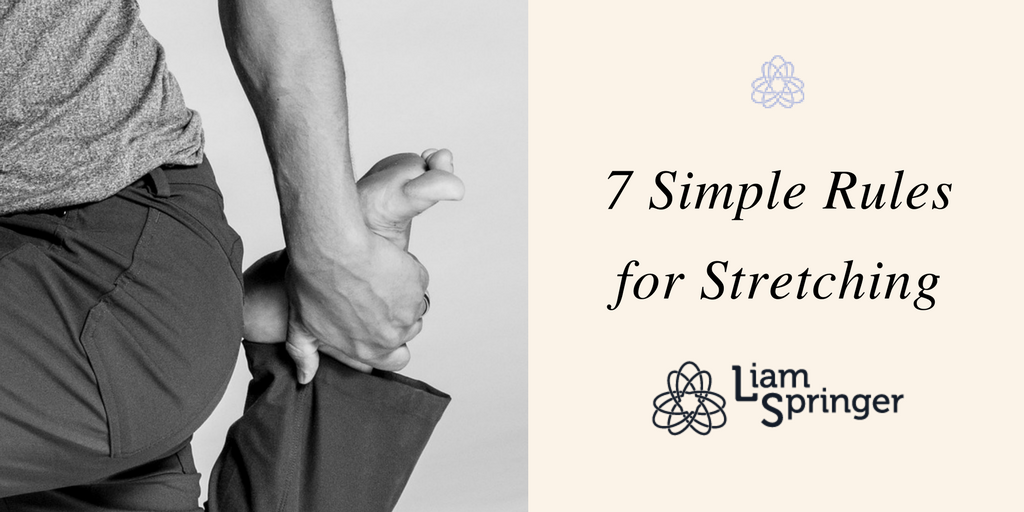
The importance of stretching is not a recent discovery. However, there is very little scientific study and development of ideal stretching technique. Guy Voyer, DO, has spent decades developing a physiologic understanding of how, when, and why to stretch based on anatomy, biomechanics, histology, and biochemistry. He has developed simple rules for stretching specific muscles in an effective way.
7 Rules for Stretching
When you use Guy Voyer’s method of Myofascial Stretching, you are not actually “stretching” the muscle fibers themselves. Rather, you are stretching and engaging the fascia and connective tissue surrounding the muscle. The simple rules for stretching are as follows:
- Always control all the bones related to the muscle being targeted.
- Always create a fixed point, and then move the attachment on the other end of the muscle to ensure it is exactly that segment which is being lengthened during action.
- Remove the ability for other connective tissues to compensate for the targeted muscle.
- Hold the stretch for 30 seconds.
- Repeat three times with 30 seconds of rest in between.
- Stretch after activity, when the muscles are warm.
- Never stretch within 2 hours prior to high-level activity.
The stretches and postures involved in this technique are very precise. Supervision by a trained professional is required. So don’t try this at home. Try it here!
Benefits of Myofascial Stretching
Myofascial Stretching promotes the healthy nourishment of tissues throughout your entire body—including the muscles, spine, joints, and connective tissues. This relatively new stretching technique is gaining popularity among athletes and others, who use it for…
Enhanced Muscle Performance
The size, function, and health of each individual muscle is regulated by the fascia that contains it. When the fascia is stretched, this allows the ideal movement of fluid into and within the muscle itself. This hydration of the fascia and the muscle is important for nutrient delivery and toxin removal. By enhancing the quality of the fascia, you enhance the performance of the muscle action as well as the recovery after extended use.
Better Posture and Range of Motion
Posture is also regulated by the fascia, as it is the limit of movement within the joints. So in order to have ideal posture and muscle balance, the fascia must allow appropriate range of motion. When your fascia is healthy, your range of motion is increased. This, in turn, allows for ideal posture. Check out my previous post to learn more about the importance of good posture.
Enhanced Joint Health
The joints will be better hydrated when there is more freedom created by the space within the capsule and the action of the joint producing force around the joint. So healthy fascia leads to healthy joints. This is why Myofascial Stretching is becoming a popular way to help treat and prevent joint injuries—especially among athletes like tennis players, golfers, etc.
Improved Hydration and Tissue Health
The movement of water throughout the entire body relies upon proper myofascial balance and function. As the fascia becomes more healthy, it holds better hydration. So you will be able to drink more water, increase your overall hydration, and more efficiently reduce the toxins found within the muscle tissue. For more info, read my previous post: Myofascial Stretching for Hydration and Tissue Health.
Ready to put these seven rules for stretching into practice? Come to one of my BTMAflex classes here in St. Louis. Visit BTMAStudios.com for a full schedule of ELDOA group classes—including BTMAflex, BTMAfit, and BTMAfix.
Want more insights on the latest topics in health and fitness? Sign up for my monthly newsletter.






